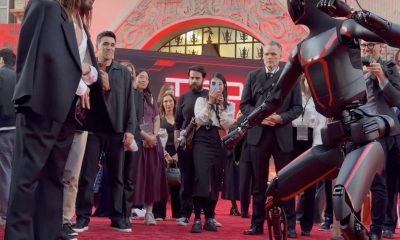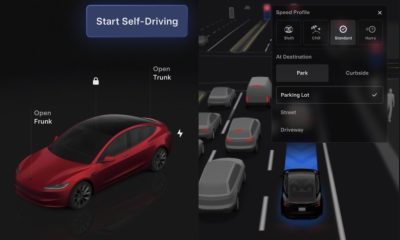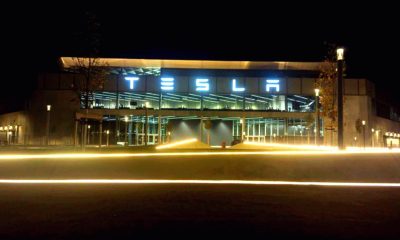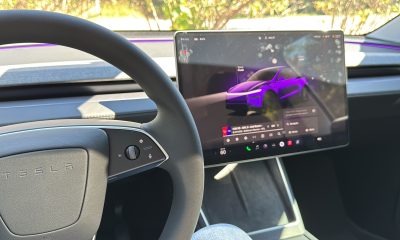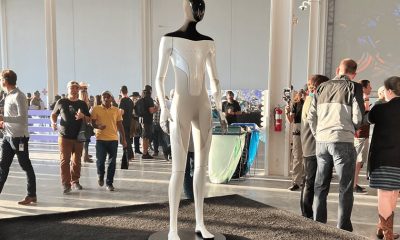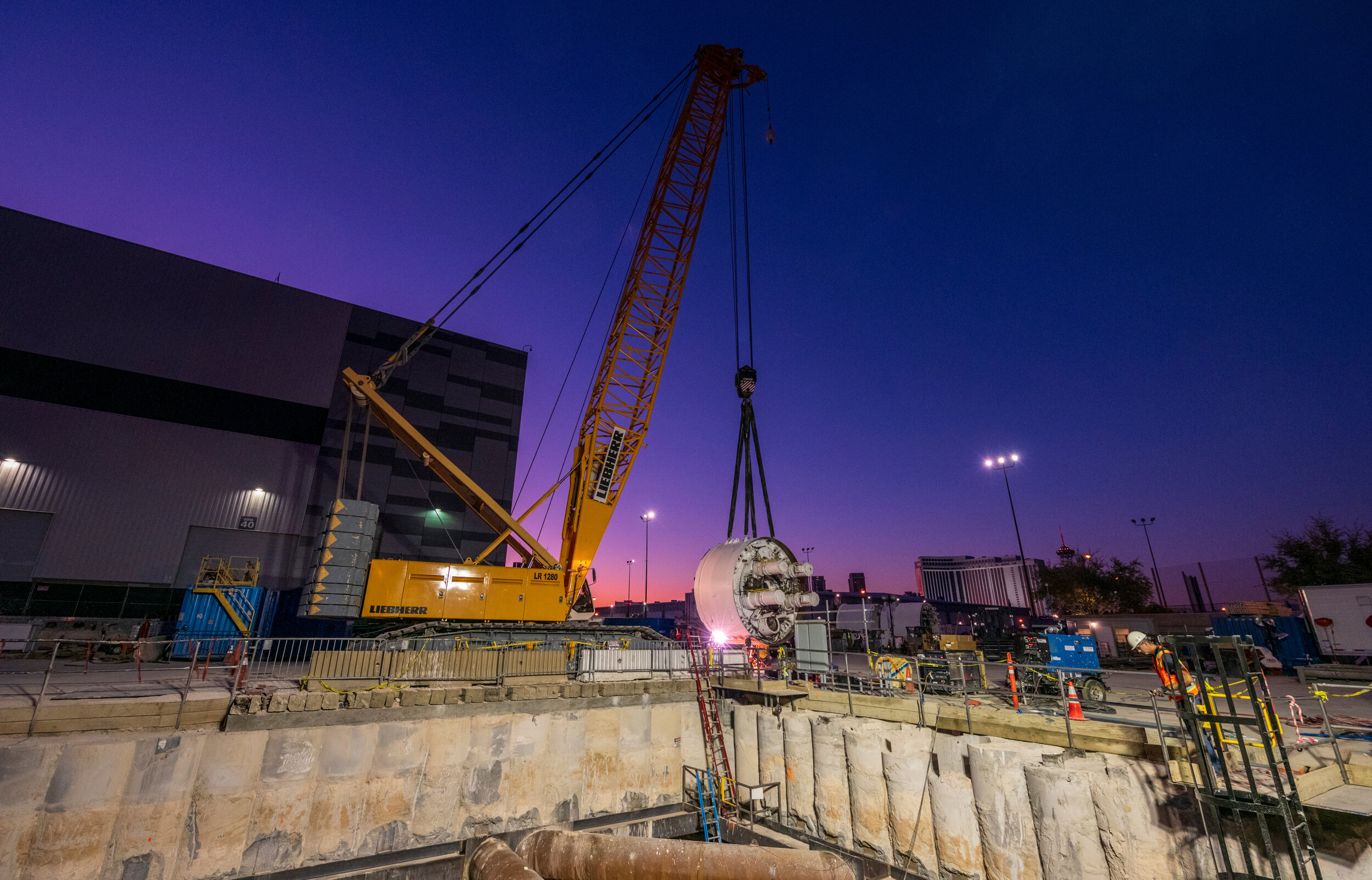
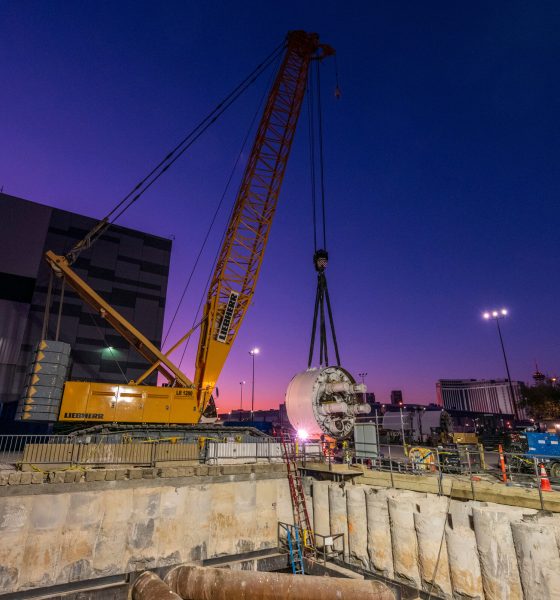
News
The Boring Company skeptics’ ‘tunnels for the rich’ argument is missing the point
The Boring Company’s Las Vegas Convention Center Loop is nearing its completion, and with it comes the emergence of Elon Musk critics arguing that the tunneling startup’s efforts are practically useless. Over the past months, the LVCC Loop has received varying degrees of skepticism and mockery that are very reminiscent of the criticisms that have been thrown at Tesla and SpaceX on a consistent basis.
A look at the comments of a video showcasing the theoretical capacity of the LVCC Loop would show this. While a good number of responses expressed some open-mindedness about the tunneling startup’s public transportation project, comments mocking the company for just building a subway or a train system are abounding. Criticism about the Loop system being “tunnels for the rich” have also been expressed.
Inasmuch as these arguments may be compelling to some, the arguments, especially those about the Loop system being a way for Elon Musk to get more money to line his pockets, do not really hold water. This argument is debunked by a simple look into Elon Musk’s other businesses, SpaceX and Tesla, and the strategy that he has employed so far.

Musk’s Strategies
Simply put, if Musk were only focused on gaining as much money as he can, SpaceX launches would not be among the cheapest in the industry. Crew Dragon flights would definitely not be as affordable as they are now. The Dragon capsule is far more modern than Russia’s Soyuz capsule but it’s less expensive in price. What does this mean? Perhaps for Musk, it’s not just about making as much money as possible.
This point is highlighted by Tesla in its Q3 earnings call, with Musk and CFO Zachary Kirkhorn emphasizing that the company’s production savings are usually passed on to customers. The prices of the Model S over the years prove this. The Model S Long Range Plus variant now costs $69,420 to start. That’s a great value for a fairly large vehicle with over 400 miles of range, tons of storage, and impressive performance, somewhat dated design notwithstanding.
The same thing is true with Teslas as a whole. Teslas are still expensive, but comparable vehicles are more expensive for what they offer. The Plaid Model S may cost about $140K, but the Taycan Turbo S, arguably the best that legacy auto has to offer, starts at about $180K. Cheaper EVs like the Hongguang MINI EV in China may be far more affordable, but they offer very little tech. GM’s MINI EV has outsold the Model 3 in China, but that’s a bare-bones electric car that doesn’t even have airbags. Ultimately, when it comes to rival vehicles with comparable specs like the Xpeng P7, Tesla’s cars like the Model 3 are still bang-for-your-buck.
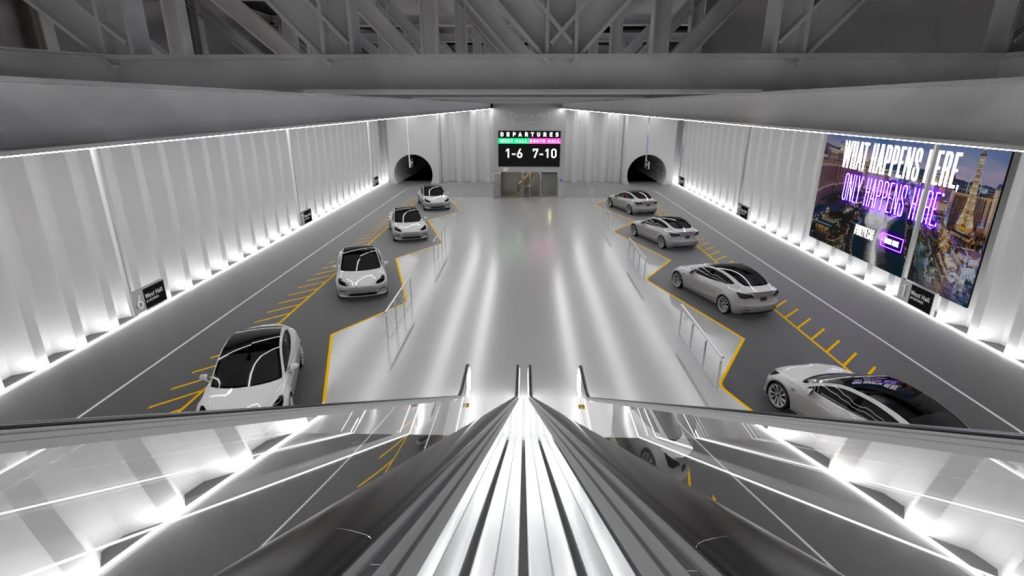
Long-term Affordability
If there’s anything about products and services that Musk develops with his team, it is the fact that they are relatively cheap to maintain. SpaceX’s rockets can get refurbished at a pretty good cost, allowing the company to be even more aggressive with its launch pricing. Tesla’s cars are cheaper to maintain than comparable gas or diesel-powered vehicles. The Boring Company’s Loop systems will likely be the same way—simple and affordable to maintain.
Pair this with the fact that Musk does not seem to be focused solely on squeezing as much profit from every customer and it seems that the Loop system is bound to be quite affordable when it does get released. The Boring Company notes that rides in the Loop would be less than half of the price of a regular taxi ride. That’s a great start, and it would likely be improved even further as the tunneling startup optimizes its operations over time.
The Boring Company’s tunnels, thanks to the company’s use of smaller tunnel boring machines and all-electric people-movers, are dirt-cheap compared to traditional tunnels such as those used in subway systems. Ultimately, these tunneling innovations are where the true disruption of the Boring Company lies. The Boring Company can build tunnels faster and cheaper—and that, ultimately, is why in the case of the Las Vegas Convention Center Loop, it wouldn’t really be as smart or innovative to “just build a train.”
Elon Musk
Tesla owners show off improvements with new Full Self-Driving v14 rollout
Some of the big things that Tesla faced head-on with the development and release of v14 were navigating in parking garages and handling parking after arriving at a destination.
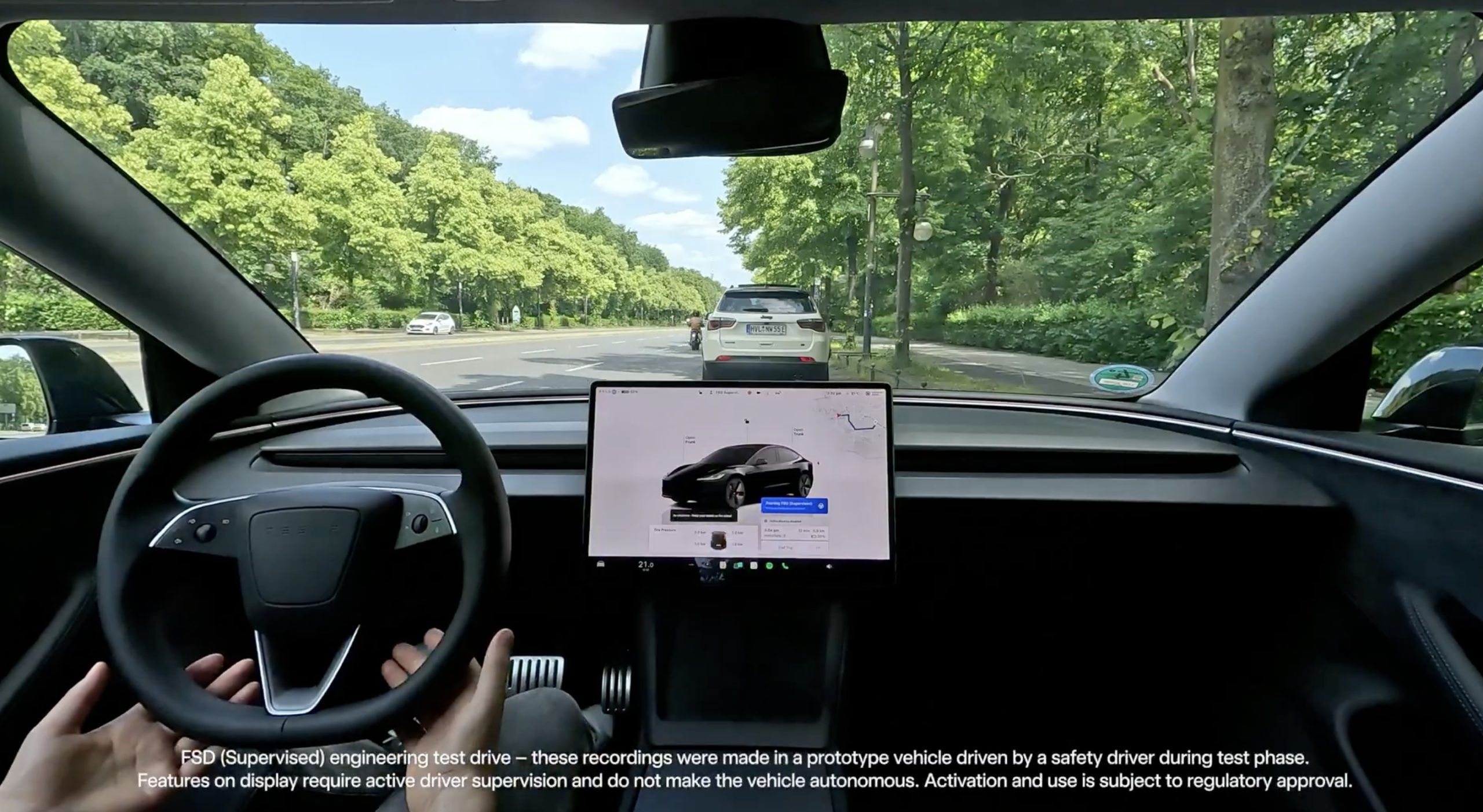
Tesla owners with access to the company’s Full Self-Driving new version, v14, which rolled out on Tuesday morning, are showcasing some of the very impressive improvements that have arrived.
CEO Elon Musk called v14 “sentient” a few weeks ahead of its rollout, claiming the newest iteration of the company’s Full Self-Driving platform would be the most accurate to date.
Tesla FSD (Supervised) V14.1 with Robotaxi-style dropoffs is here
It was obvious this narrative had Tesla owners keeping their expectations high, as there were very evidently things that needed to be improved upon that were present in v13. I wrote about several improvements I was hoping to see, and based on the release notes for v14, Tesla did have these things in the works already.
Some of the big things that Tesla faced head-on with the development and release of v14 were navigating in parking garages and handling parking after arriving at a destination.
Tesla said it was working to increase the capabilities of Summon within parking garages, as many owners believe that is where it would be the most beneficial.
While that does not appear to be part of this initial v14 rollout, it does seem Tesla is focused on improving the suite’s ability to navigate through these garages, including stopping for a ticket to enter the facility, finding a spot, and parking in an appropriate space.
It was evident this was a huge improvement based on one example from an owner who received v14:
FSD v14 navigates parking garages really well. Here’s a full clip of it leaving a parking spot, going through the garage, waiting for me to put the ticket in, and exiting.
Almost feels like it can read the signs above to go find the exit, with a complex garage here.@Tesla_AI pic.twitter.com/fv9j6LNcp6
— Zack (@BLKMDL3) October 7, 2025
If you look closely, you will even see the car shift slightly to the right when it arrives at the ticketing station, making it easier for the driver to hand over their ticket and payment. It then moves back out to the right when leaving to return to the center of the lane. It’s very intuitive.
Additionally, it appears to be more accurate when parking, thanks to improvements that enable owners to select the type of parking upon arrival at a destination.
In the v14.1 release notes, Tesla said that it has added “Arrival Options for you to select where FSD should park: in a Parking Lot, on the Street, in a Driveway, in a Parking Garage, or at the Curbside.”
One owner chose to navigate home and chose a garage to park in. Full Self-Driving performed it without any issues:
Not only can FSD 14.1 pull into my gravel driveway (no version before has done this) it can pull into the garage. pic.twitter.com/pweI5JKWHD
— Dirty Tesla (@DirtyTesLa) October 7, 2025
These are just two evident improvements so far, and there are likely many more on the way. The changes and fixes will be tracked by anyone with access to FSD v14 in the coming weeks.
News
Tesla Optimus steals the show during TRON: ARES premiere
Now that kung-fu Optimus demonstration makes sense.
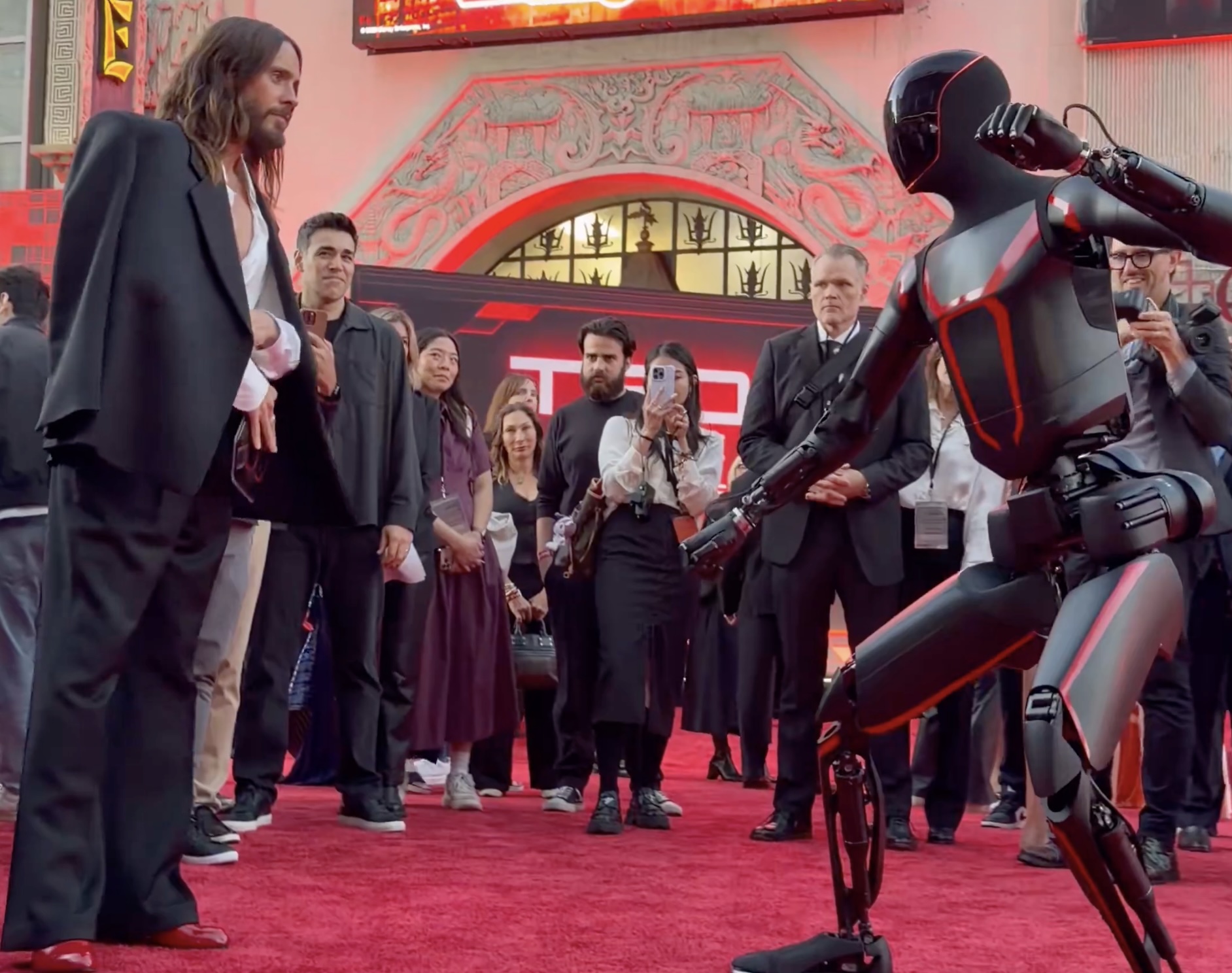
Just a few days ago, Elon Musk shared a video of Tesla Optimus demonstrating some kung fu moves with a human partner. The video was impressive, though some were confused about why the Optimus team was busying itself with what appeared to be a cool but frivolous demonstration.
With the premiere of TRON: ARES, we now know that Optimus’ kung fu demonstration was part of the robot’s preparations for the red carpet.
Optimus “starts a fight”
As noted by X Business on its official account on the social media platform, the TRON: ARES red carpet world premiere was a showcase of today’s AI-powered technologies. With this in mind, xAI, X, Walt Disney, and Tesla collaborated to provide attendees with an immersive experience on real-world AI. This included Optimus engaging with attendees, and even distributing theater concessions.
But one black and red painted Optimus unit definitely stole the show. The humanoid robot, in front of several attendees, attempted to “pick a fight” with Jared Leto, who starts in the movie alongside Greta Lee, Evan Peters, and Jeff Bridges. As could be seen in the video of Optimus, the robot’s moves in the red carpet were similar to the kung fu demonstration that Elon Musk showcased last week.
TRON: ARES
Monique Pintarelli, Head of Americas at X, shared some insights about the event, which ended up being a collaboration of sorts between several Elon Musk-led companies.
“This partnership with Disney lets fans and stars experience the world of TRON like never before – turning the red carpet event into a collision between the real world and AI. By leveraging X’s unparalleled real-time engagement and xAI’s cutting-edge technology alongside Tesla’s Optimus robots, we’re creating shared, immersive experiences that redefine storytelling,” the X executive noted.
TRON: ARES releases on U.S. theaters on October 10, 2025.
News
Tesla FSD (Supervised) V14.1 with Robotaxi-style dropoffs is here
This represents FSD’s most significant update in nearly a year.
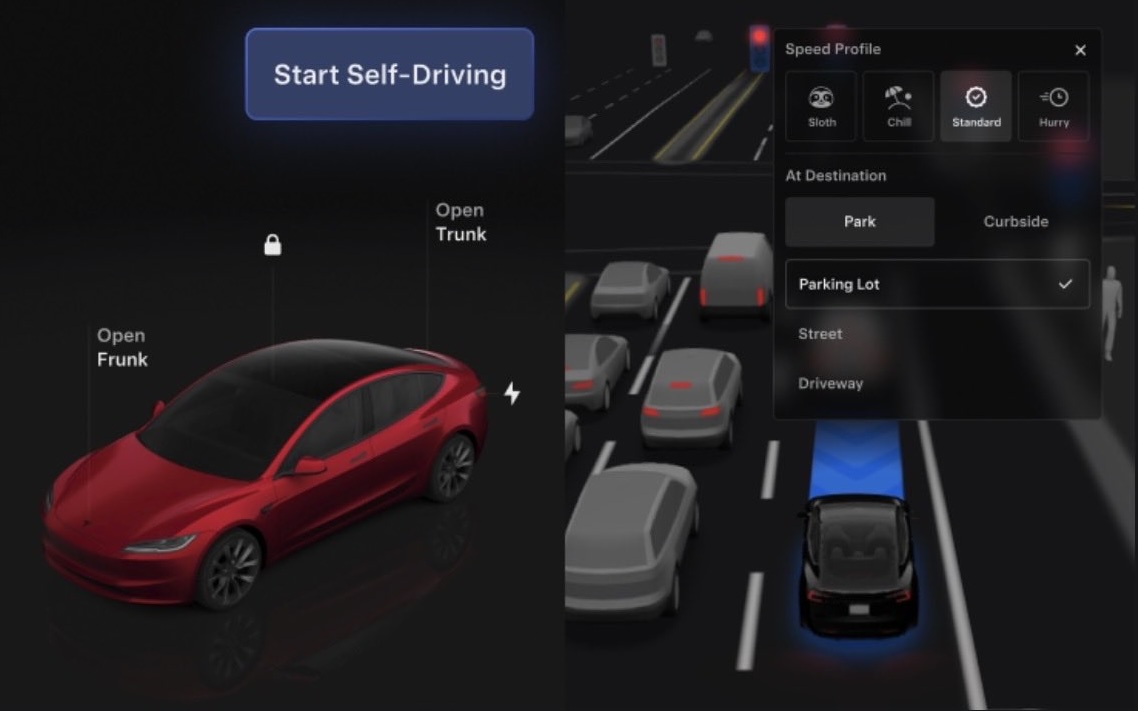
Tesla has started the rollout of Full Self-Driving (Supervised) V14.1, the advanced driver-assist system’s most significant update in nearly a year. The release introduces vision-based navigation for real-time detour handling and a new “Arrival Options” feature that simulates Robotaxi-style drop-offs.
New Tesla Vision-based features
With Version 14.1, Tesla has integrated navigation and routing directly into its vision-based neural network, enabling the system to respond to scenarios such as blocked roads or closures in real time. The update also enhances emergency vehicle detection, allowing the car to pull over or yield when police, fire, or ambulances are nearby.
Other improvements include refined responses to debris, school buses, and lane cut-ins, as well as smoother handling of unprotected turns and gated entries. The update also adds a Robotaxi-style automatic camera-cleaning system. Tesla also promises improved fault recovery for greater reliability during degraded system operation.
New Speed Profiles and other features
Drivers can now personalize FSD’s behavior more precisely through new Speed Profiles. A new “Sloth” mode has joined the lineup, offering a more conservative lane and speed selection than “Chill.” Preferences for parking and arrival positions are saved per destination, while the system’s reasoning model automatically recommends several options for each route.
Users can start FSD from a single tap, adjust settings from the central visualization, and expect fewer driver “nags,” according to Elon Musk. The CEO noted that Version 14 features a 10x higher parameter count and said it “feels sentient” compared to earlier builds. While it’s still a supervised system, unlike the Austin Robotaxi pilot, FSD 14.1 seems to be a key milestone toward the refinement of Tesla’s autonomous driving efforts.
FSD (Supervised) V14.1 release notes
Following are the release notes for FSD (Supervised) V14.1:
FSD(Supervised) v14.1 includes:
• Added Arrival Options for you to select where FSD should park: in a Parking Lot, on the Street, in a Driveway, in a Parking Garage, or at the Curbside.
• Added handling to pull over or yield for emergency vehicles (e.g. police cars, fire trucks, ambulances).
• Added navigation and routing into the vision-based neural network for real-time handling of blocked roads and detours.
• Added additional Speed Profile to further customize driving style preference.
• Improved handling for static and dynamic gates.
• Improved offsetting for road debris (e.g. tires, tree branches, boxes).
• Improve handling of several scenarios including: unprotected turns, lane changes, vehicle cut-ins, and school buses.
Improved FSD’s ability to manage system faults and recover smoothly from degraded operation for enhanced reliability.
• Added automatic narrow field washing to provide rapid and efficient front camera self-cleaning, and optimize aerodynamics wash at higher vehicle speed.
• Added alerting for residue build-up on interior windshield that may impact front camera visibility. If affected, visit Service for cleaning!
Upcoming Improvements:
• Overall smoothness and sentience
• Parking spot selection and parking quality
• You can now select an arrival option such as Parking Lot, Street, Driveway, Parking Garage and Curbside for Robotaxi-style drop offs.
• Your preferences for arrival options and preferred parking positions are persisted for each destination.
• Our reasoning model will assess the suitable options for your destination and pick an intuitive default.
Speed Profiles:
FSD (Supervised) will now determine the appropriate speed based on a mix of driver profile, speed limit, and surrounding traffic:
• Introduced new Speed Profile SLOTH, which comes with lower speeds & more conservative lane selection than CHILL.
• Driver profile now has a stronger impact on behavior. The more assertive the profile, the higher the max speed.
• Right scroll-wheel up/down now adjusts Speed Profile setting rather than your precise max speed offset selection in mph/kph.
UI Improvements:
• Start Self-Driving with a tap of the touchscreen from Park, or any time during your drive.
• Adjust settings like the Speed Profile and Arrival Options directly from the Autopilot visualization on the center display.
-

 Elon Musk2 weeks ago
Elon Musk2 weeks agoTesla FSD V14 set for early wide release next week: Elon Musk
-
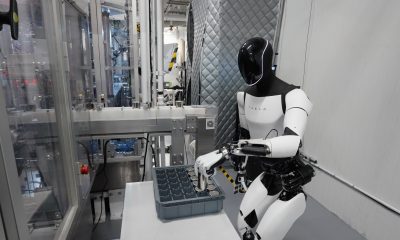
 News1 week ago
News1 week agoElon Musk gives update on Tesla Optimus progress
-
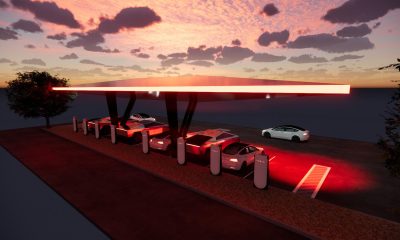
 News2 weeks ago
News2 weeks agoTesla has a new first with its Supercharger network
-
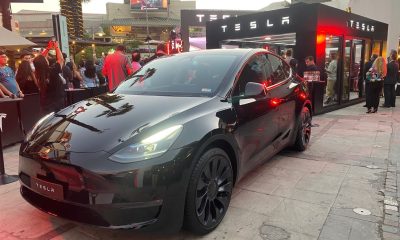
 News2 weeks ago
News2 weeks agoTesla job postings seem to show next surprise market entry
-
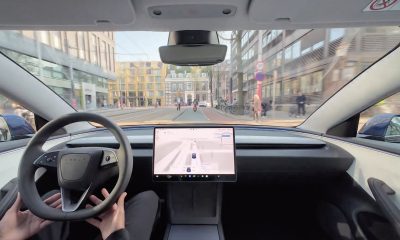
 Investor's Corner2 weeks ago
Investor's Corner2 weeks agoTesla gets new Street-high price target with high hopes for autonomy domination
-

 Lifestyle1 week ago
Lifestyle1 week ago500-mile test proves why Tesla Model Y still humiliates rivals in Europe
-
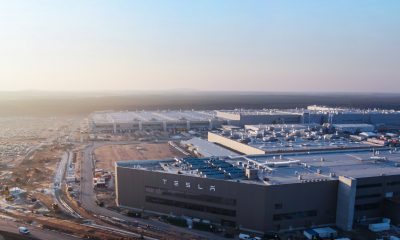
 News1 week ago
News1 week agoTesla Giga Berlin’s water consumption has achieved the unthinkable
-
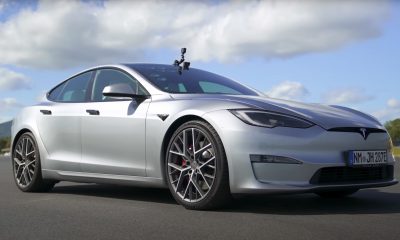
 Lifestyle1 week ago
Lifestyle1 week agoTesla Model S Plaid battles China’s 1500 hp monster Nurburgring monster, with surprising results


